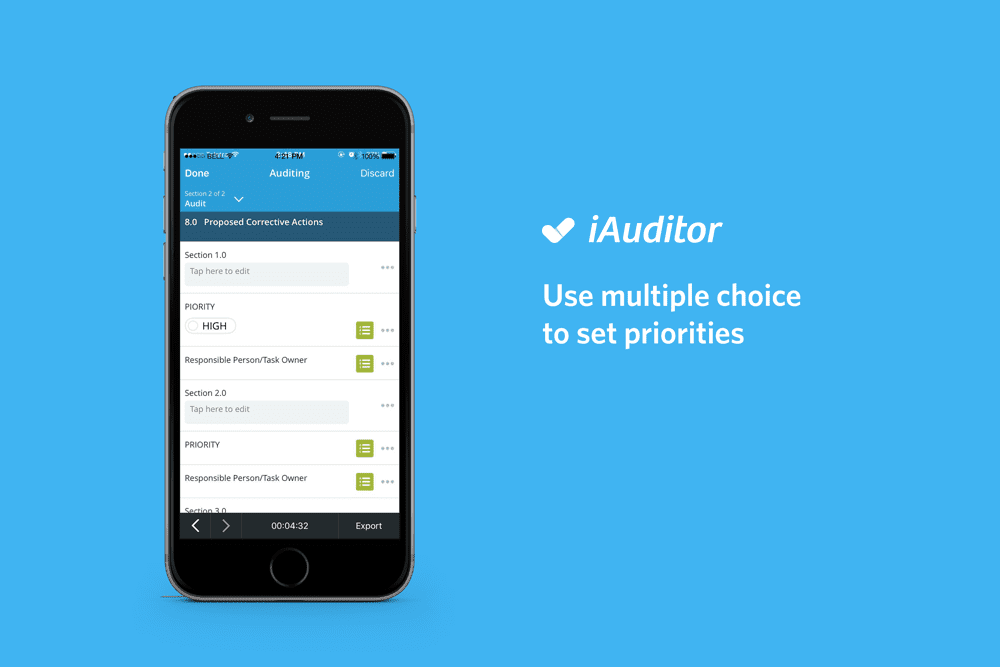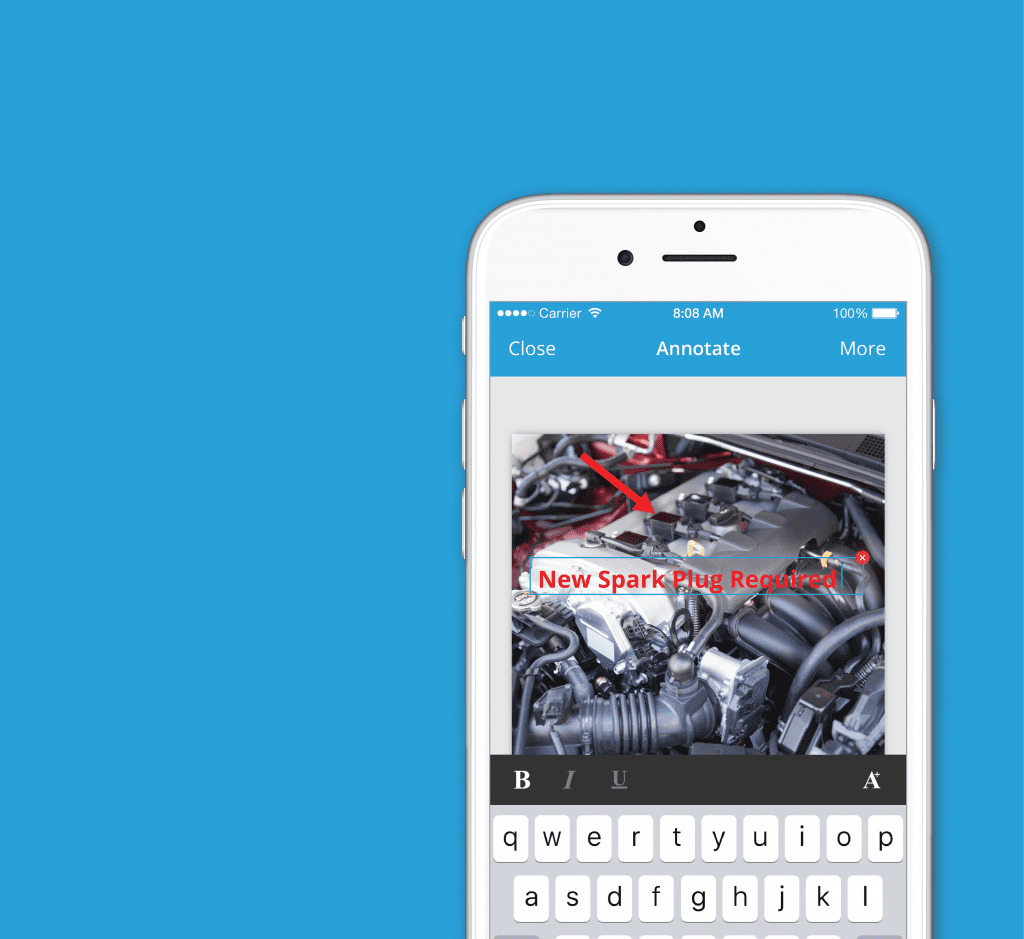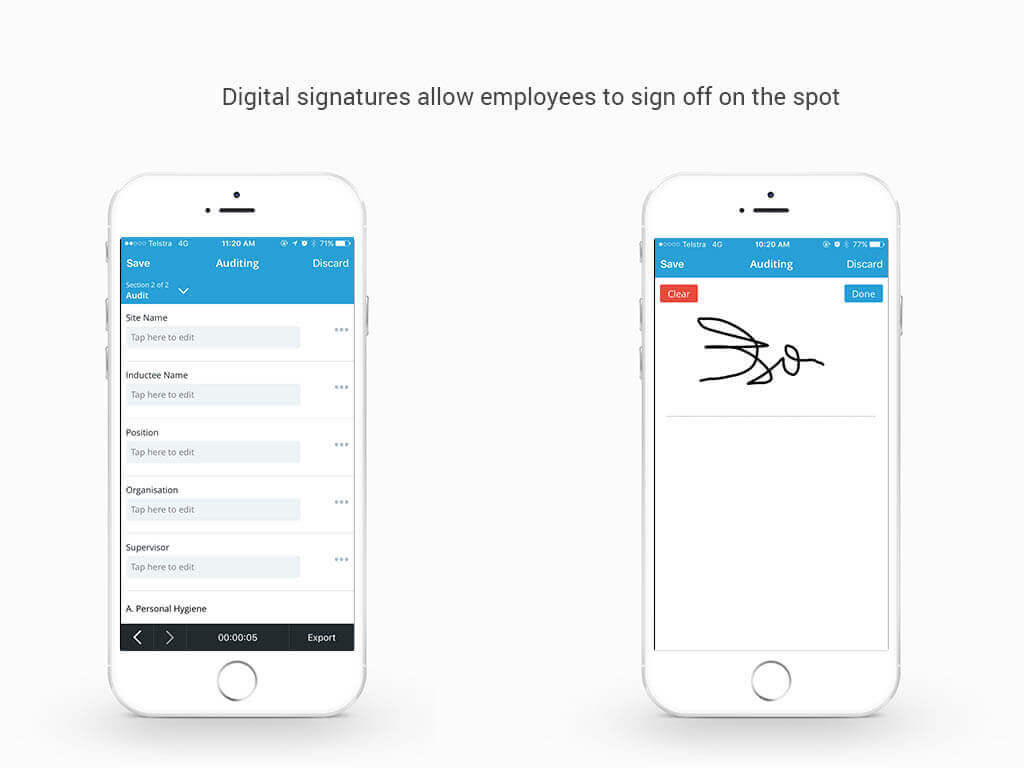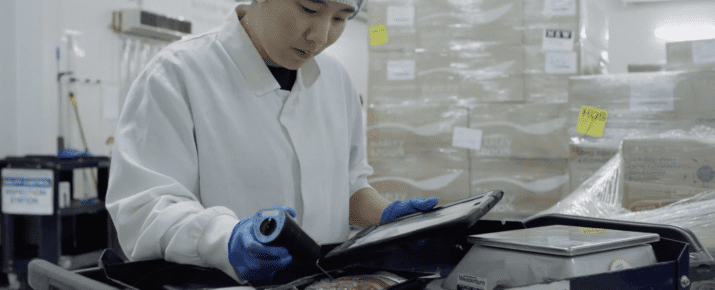Best Practices For Template Building
Checklist Best Practices | By | 5 May 2016 | 3 minute read

SafetyCulture (formerly iAuditor) is more than just a basic Yes/No checklist that reflects your current paper checklists. It is a powerful system that allows you to build intelligent templates, helping you make better business decisions.
9 ways to make effective templates:
1. Multiple choice fields
Save time in the field by using pre-prepared responses for better data collection. Remember, if you don’t provide uniform answers to questions you can’t track the trends. This is by far one of the most powerful fields offered in SafetyCulture (formerly iAuditor) and can save you a lot of time. This allows you to display location, states, address, employee names, assets, and makes your analytics clear and concise. Multiple choice field also ensure your eliminate issues with data collection like typing ‘CA’ over ‘California.’ Learn more about how to do this here.
2. Image capture and text annotation
Improve your reports and break through language barriers by using annotated and marked up images. Using high quality images throughout your inspection can increase the level of detail and accuracy in your reports. If you have blurry images, you can consider using tools like Artguru’s Image Enhancer to improve image quality, preventing blurriness from affecting your workflow.
Having images embedded into your reports eliminates the need for email attachments and needing to send multiple emails due to image sizing issues. Images can also be imbedded into templates to display equipment faults, best practices and more. Images overcome language barriers within workplaces.
3. Add images to your template to display best practices
SafetyCulture iAuditor provides the ability to add photos into your template to display best practices for your employees. Demonstrate how to operate equipment, where a jobsite is, or show staff where items need to be placed. For those in the hospitality industry this feature is particularly valuable. You could use the drawing field as a visual representation of the hotel room for your housekeeping staff. If you’re looking to create visual templates for diverse business needs, utilizing easy-to-edit templates allows for quick customization. This ensures each template serves its unique purpose efficiently without starting from scratch every time.
4. Link to videos and add in diagrams
Within your templates you can demonstrate best practices and training methods by adding in video links and picture diagrams. This serves as a quick reminder about how a set-up should look or how a particular piece should be inspected. If you are using SafetyCulture (formerly iAuditor) for training your staff, it is a great way to visually teach your workers.
5. Signatures
No need to print off reports or new workplace policies to get your staff to sign them. You can date stamp and sign on the spot and increase accountability in the organization.
6. Smart & Dynamic Fields
Change the way you inspect forever by building intelligent checklists that no paper checklist will ever do. Smart Fields allow you to add in a database of hundreds of questions and huge amounts of information. This feature allows you to hide irrelevant information and guide the auditor in the right direction effortlessly. Similarly, Dynamic Fields allow you to add multiple questions of the same item so you don’t have to manually enter the same set of questions.
7. Categories and Nesting
Improve your reports by creating headings so you can organize groups of related questions and items. By nesting items under particular categories you have the ability to see category scores in the report, so you can determine if specific categories are trending in a specific way, good or bad. If you didn’t use categories, your checklist would appear as one continuous audit, making it very confusing to look for information post audit.
8. Add Failed Responses
A Failed Response should be added to any question that could pose a high risk or is critical to your business, so that you can do exception based reports and identify habitual patterns in your data. By marking an answer as a Failed Response, our advanced analytics will show you the number of times that question has failed in the audits it appears in. You can drill down into exactly what went wrong immediately. By gathering this information in real-time, you’re gathering intelligent insight into how many times a question has failed, which auditor marked it as failed and the number of times that question has been marked as a failed response.
9. Set up template sharing using Export Profiles
SafetyCulture (formerly iAuditor) gives you the ability to export instant professional reports in a range of formats, such as PDF, excel, csv and more. By having the right people in your organization see the insights and data, you can leverage the collective knowledge of your employees and increase visibility and communication across departments. From the get go, you will often have an idea of who in your business needs to receive particular audit results. The best way to do this is to set up an Export Profile and attach it to a specific company template. Using a customized Export Profile you can determine who needs to receive the completed audit or choose to file it in Dropbox. See more about Export Profiles and how to set them up.
Start building intelligent templates today with SafetyCulture (formerly iAuditor). Create your FREE account here.
Important Notice
The information contained in this article is general in nature and you should consider whether the information is appropriate to your specific needs. Legal and other matters referred to in this article are based on our interpretation of laws existing at the time and should not be relied on in place of professional advice. We are not responsible for the content of any site owned by a third party that may be linked to this article. SafetyCulture disclaims all liability (except for any liability which by law cannot be excluded) for any error, inaccuracy, or omission from the information contained in this article, any site linked to this article, and any loss or damage suffered by any person directly or indirectly through relying on this information.








